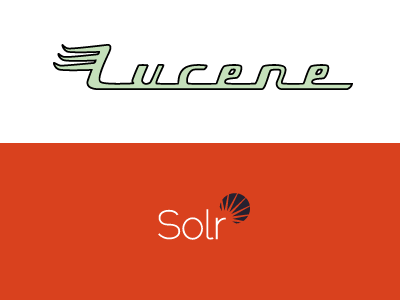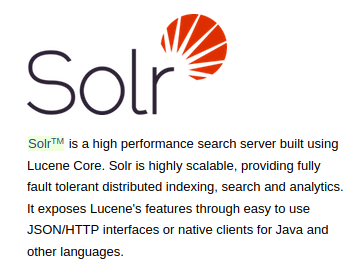

Elasticsearch is completely based on JSON and is suitable for time series and NoSQL data. It extends Lucene’s powerful indexing and search functionalities using RESTful APIs, and it archives the distribution of data on multiple servers using the index and shards concept. About ElasticsearchĮlasticsearch is also an open-source search engine built on top of Apache Lucene, as the rest of the ELK Stack, including Logstash and Kibana. Solr offers powerful features such as distributed full-text search, faceting, near real-time indexing, high availability, NoSQL features, integrations with big data tools such as Hadoop, and the ability to handle rich-text documents such as Word and PDF. It has been around for almost a decade and a half, making it a mature product with a broad user community. About Apache SolrĪpache Solr is an open-source search server built on top of Lucene that provides all of Lucene’s search capabilities through HTTP requests. However, they differ significantly in terms of deployment, scalability, query language, and many other functionalities. This blog post will pit Solr vs Elasticsearch, two of the most popular open source search engines whose fortunes over the years have gone in different directions.īoth of them are built on top of Apache Lucene, so the features they support are very similar. Performing searches on terabytes and petabytes of data can be challenging when speed, performance, and high availability are core requirements. Searches are integral parts of any application. Here is one place that describes the SQL interface of Solr, but there is plenty of information available on Solr's pages and elsewhere. Keep in mind that Solr's support of SQL doesn't expose quite all of the functionality that is exposed to the query syntax. If you or your customers are more comfortable with SQL than Solr Query Syntax, that is an option. When to use SQL queries is really up to you. Model Version is something to enable backwards compatibility in the future, in case we need to change the definitions of our API models at some point, and can be ignored. This feature was added to enable some of our more search-savy users to take advantage of features of Solr that we have not explicitly added first class support for in our UI. If you are searching a repository of books, for example, and only want to see the title and author of your search results, you could use this feature to filter out other metadata and simplify your results list.Ĭustom parameters allow you to include any Solr query parameter (you can find some examples in the above link).

The returned field filter defines which fields you will see on the results of your search query. As one example, they are cached, and are typically used when the same filter is going to be applied many times to improve performance.

The query string is what you (a search end user) are searching for, what you type in the Google bar, etc.įilter queries are additional clauses added to your search query, however the filter queries are treated slightly differently by the search engine. The other features mentioned were added in HCI 1.2 and 1.3 if you want to view the training on the features.

All of the knowledge transfer training slides and presentations are available in the Employees area of the community. You can find training info on each of these features in the knowledge transfer presentations from the releases we introduced them.


 0 kommentar(er)
0 kommentar(er)
